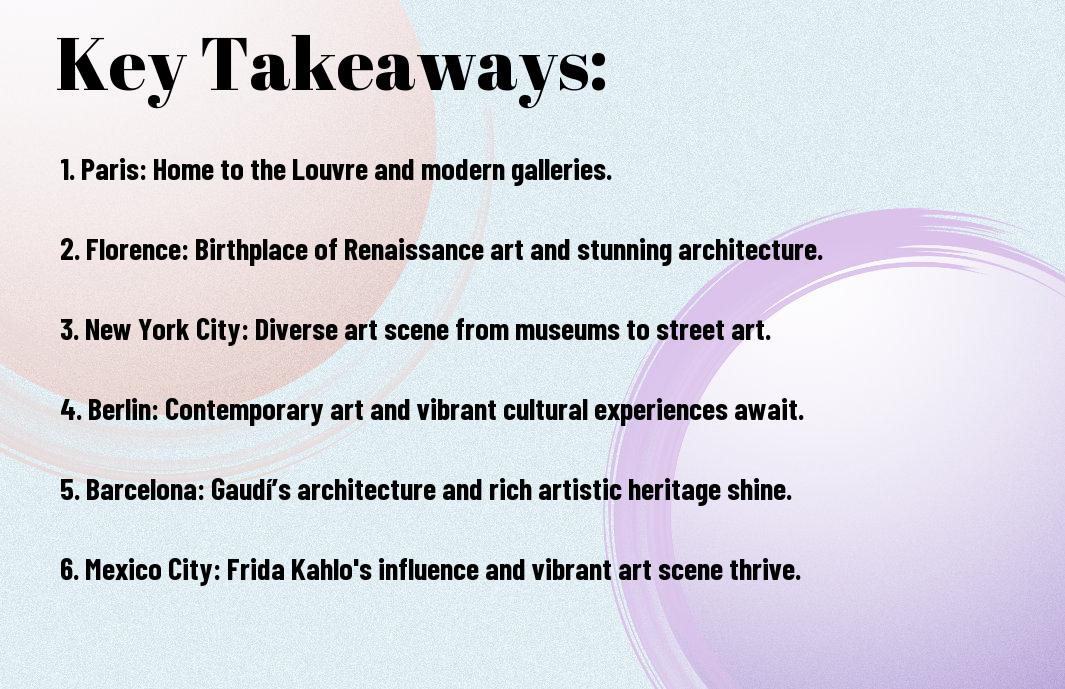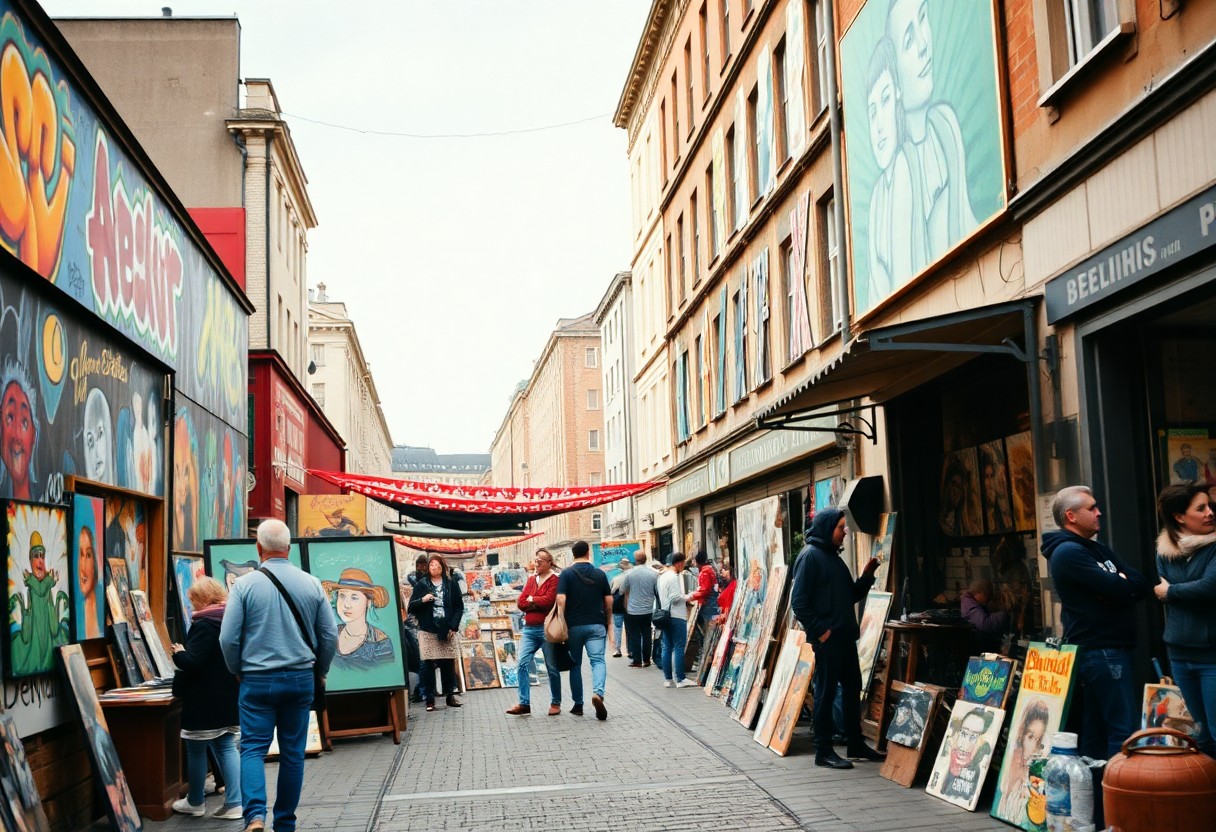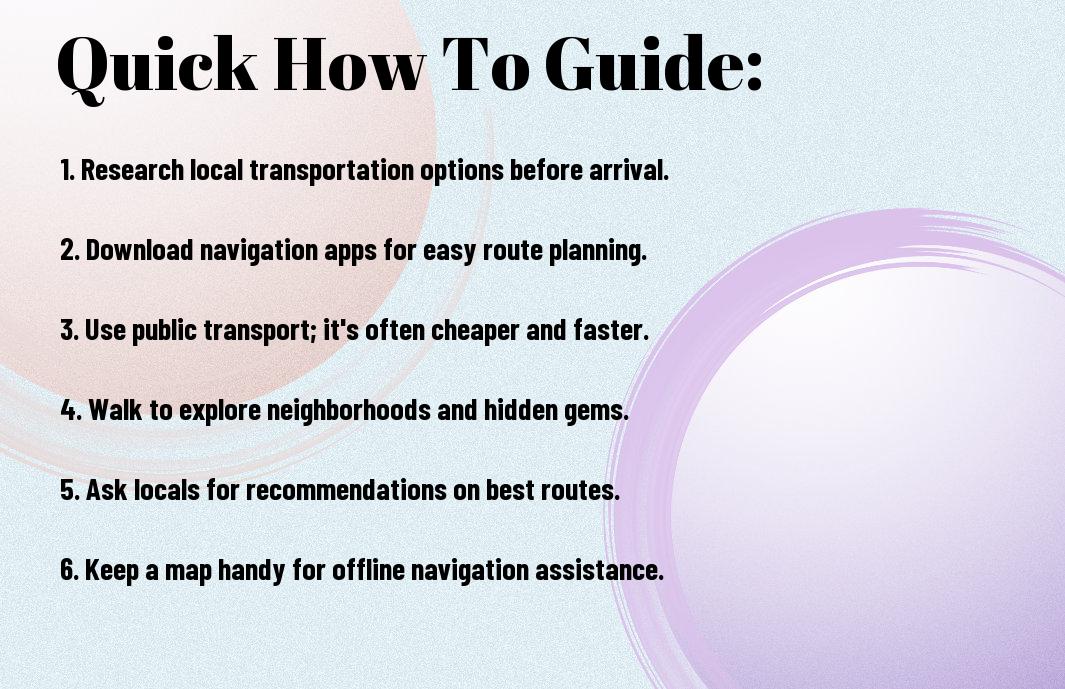Just because you want to explore the world doesn’t mean you have to spend a fortune doing it. With a little planning and some smart strategies, you can travel internationally without emptying your wallet. In this guide, you will discover practical tips that help you make the most of your travels while keeping your budget intact. For an excellent start, check out these 9 tips for traveling the world without breaking the bank.
Key Takeaways:
- Plan in Advance: Booking flights and accommodations early can lead to significant savings. Aim to reserve at least a few months ahead of your travel date.
- Be Flexible: Adjusting your travel dates and destinations can help you discover cheaper airfare and accommodation options. Look for off-peak seasons to travel for better deals.
- Use Budget Airlines: Consider flying with budget carriers or look for which airlines offer the best prices during your planned travel dates. Just be aware of any additional fees.
- Explore Alternative Accommodations: Instead of hotels, check out hostels, vacation rentals, or online platforms that provide budget-friendly lodging options.
- Limit Dining Expenses: Instead of eating out for every meal, try local markets, grocery stores, or street food, which can greatly reduce your daily expenses.

How to Plan Your Trip
The key to planning an affordable international trip lies in thorough preparation. Begin by setting your travel dates, creating an itinerary, and identifying your must-see attractions. This will help you organize your travel details, find budget-friendly flights, and explore accommodation options that won’t empty your wallet. Additionally, consider flexibility in your plans to take advantage of last-minute deals, which can yield significant savings.
Setting a Budget
Some travelers find success by determining their overall budget before plunging into the details. Break down your expenses into categories such as flights, accommodations, activities, and daily necessities. Allocate a portion for emergencies and spontaneous outings. By having a clear budget in mind, you can make informed choices, ensuring your trip remains financially manageable.
Researching Destinations
For a cost-effective journey, extensive research on your chosen destination is necessary. Understanding the local cost of living, best travel times, and available activities helps you select options that fit your budget. Knowledge of free or low-cost attractions allows you to create a diverse itinerary without overspending.
Plan to utilize travel blogs, forums, and guidebooks to gather insights about your destination. Social media also provides real-time recommendations and tips from fellow travelers, enhancing your knowledge. By exploring online platforms, you can uncover hidden gems and budget-friendly experiences, transforming your travel adventure into a memorable and economically friendly journey.
Tips for Affordable Transportation
One way to save money while traveling internationally is to focus on your transportation options. Consider these strategies to keep your travel costs low:
- Book flights well in advance to secure better rates.
- Utilize travel apps to compare prices and find deals.
- Be flexible with your travel dates for potential savings.
- Sign up for fare alerts to catch lower prices when they become available.
- Opt for budget airlines which often have lower fares.
After you have made your travel plans, explore ways to minimize your overall transportation expenses.
Finding Cheap Flights
Assuming you want to find the best deal on flights, start your search early and leverage flight comparison websites. Use flexible date searches to identify the cheapest time to travel, and consider flying to nearby airports. Don’t forget to explore any alternative routes or connections that can lower your airfare. Setting a budget and sticking to it will help keep your spending in check.
Using Public Transportation
If you’re looking to get around cheaply, consider relying on public transportation systems in your destination city. Many destinations offer extensive bus and train networks that can greatly reduce transportation costs.
A smart way to navigate a new city is by exploring its public transportation options. Many urban areas provide affordable transit solutions, including buses, trams, and subways, which are not only budget-friendly but also allow you to immerse yourself in local culture. Investing in a multi-day transit pass can yield significant savings if you plan to explore frequently. Moreover, using public transport often provides a more authentic travel experience, allowing you to interact with locals and discover hidden gems often missed by tourists.
Accommodation Strategies
For budget-conscious travelers, selecting the right accommodation can significantly impact your overall expenses. Utilizing strategies such as alternative lodging and savvy booking practices can lead to substantial savings, allowing you to invest more in experiences rather than just a place to sleep. From hostels to vacation rentals, exploring various options can enhance both your budget and travel experience.
Alternatives to Hotels
Alternatives to hotels can offer unique and economical lodging options. Consider staying in hostels, guesthouses, or vacation rentals to maximize your travel budget. You can also explore platforms like Couchsurfing or house-sitting opportunities to find free or low-cost accommodations while immersing yourself in the local culture.
Booking Tips for Better Deals
For better deals on your accommodation, leverage certain booking strategies. Some ways to secure savings include:
- Book during the off-peak season
- Utilize price comparison websites
- Join loyalty programs for exclusive discounts
- Check for last-minute deals or flexible dates
Recognizing these tips can provide you with opportunities to save and enhance your travel experience.
To optimize your chances of finding great deals on accommodations, consider applying a few advanced techniques. You might want to:
- Sign up for fare alerts or newsletters
- Use incognito browsing to avoid price hikes
- Contact the property directly for unpublished rates
- Be open to lesser-known neighborhoods for unique stays
Recognizing these strategies enables you to uncover hidden gems that fit your budget while providing memorable experiences during your travels.

Eating on a Budget
To enjoy delicious meals without overspending, make sure you prioritize local dining options and seek out budget-friendly eateries. Look for street food vendors and local markets, where you can often find authentic dishes at a fraction of the cost of tourist-centric restaurants. Embrace the culinary culture of your destination by trying new flavors while staying within your budget.
Local Cuisine vs. Tourist Traps
Even when exploring a new city, it’s vital to distinguish between local cuisine and tourist traps. Tourist hotspots often charge significantly more for lesser quality food, while authentic local spots provide a genuine experience without the inflated price tag. Seek recommendations from locals or use online resources to find the best value.
Cooking Your Own Meals
While dining out is part of the travel experience, cooking your own meals can save you a lot of money. Staying in accommodations with kitchen facilities allows you to prepare simple, affordable meals. You can visit local grocery stores to find fresh ingredients and sample local produce, giving you the chance to try your hand at cooking regional dishes.
Another benefit of cooking your own meals is the opportunity to enjoy a more relaxed dining experience. You can savor your food at your own pace, avoiding the hustle and bustle of crowded restaurants. Plus, you can control portion sizes and cater to your dietary preferences. This approach not only keeps your meal costs down but also enables you to connect with the local culture by utilizing regional ingredients in your cooking.
Managing Your Expenses
Keep a close eye on your expenses while traveling internationally, as costs can quickly add up. Set a daily budget to help you stay on track and make informed decisions. Use apps to track spending and identify areas where you can cut back, ensuring you maximize your travel experience without overspending.
Currency Exchange Tips
Little known currency exchange tips can save you money during your travels. Always compare rates at different exchange spots and avoid airports for currency conversion. Consider using local ATMs and credit cards to get better rates.
- Exchange only what you need.
- Use credit cards with no foreign transaction fees.
- Stay updated on current exchange rates.
Perceiving the fluctuations in exchange rates can help you make smarter decisions regarding when and where to exchange your money, ultimately allowing you to save and spend effectively.
Using Travel Insurance
Some travelers overlook the importance of travel insurance, believing it’s an unnecessary expense. However, having insurance can provide a safety net against unexpected cancellations, medical emergencies, or lost luggage, which can otherwise lead to significant financial stress during your trip.
Managing potential risks while traveling is vital to preserving your budget. Travel insurance can be an affordable way to protect your investment and ensure you don’t face overwhelming costs in case of unforeseen incidents. When choosing a policy, look for comprehensive coverage that includes trip cancellations, medical emergencies, and lost belongings, giving you peace of mind throughout your journey.
Factors to Consider Before Traveling
Once again, before you launch on your international adventure, assess key factors that will impact your budget and enjoyment. Consider things like:
- Your destination and its cost of living.
- Travel dates and peak tourist seasons.
- Currency exchange rates.
- Your accommodation and transportation options.
- Health and travel insurance needs.
Recognizing these elements will help you craft a more economical travel experience.
Best Times to Travel
On choosing the best times to travel, take advantage of off-peak seasons when prices for flights and accommodations are significantly lower. This not only saves you money but enhances your experience as attractions are less crowded, and you often enjoy more personalized service. Always keep an eye on local holidays and events that might spike prices, and plan accordingly.
Travel Safety and Regulations
Assuming you want a hassle-free travel experience, understanding safety protocols and regulations in your destination is crucial. Each country has its own customs, security measures, and potential travel advisories that could affect your plans. Stay informed about travel restrictions, required vaccinations, and local laws to ensure a smooth trip.
Safety should be your top priority while traveling. Familiarize yourself with emergency contacts, local laws, and health care facilities available at your destination. Consider signing up for travel warnings and alerts for your launched country from your government. Knowing how to remain safe while navigating a foreign environment will not only ease your worries, but it will also heighten your enjoyment of the experience.
Summing up
On the whole, traveling internationally on a budget is entirely achievable with careful planning and smart choices. By researching affordable destinations, utilizing budget airlines, and embracing local cuisine, you can enhance your travel experience without overspending. Consider staying in hostels or vacation rentals, and don’t shy away from using public transportation. With a little creativity and flexibility, you can explore the world and create unforgettable memories while keeping your finances in check.
Q: What are some effective ways to save money on flights when planning an international trip?
A: To save on flights, consider booking your tickets well in advance, ideally 2 to 3 months before your departure. Flexibility with your travel dates can also help; try using fare comparison websites that allow you to view prices over a range of dates. Additionally, consider flying on weekdays rather than weekends, as flights tend to be cheaper. Signing up for fare alerts can also keep you informed of price drops. Lastly, check for budget airlines that may offer lower fares for international routes.
Q: How can I manage accommodation costs while traveling internationally?
A: One effective strategy to manage accommodation costs is to explore options beyond traditional hotels, such as hostels, guesthouses, vacation rentals, or even house-sitting opportunities. Additionally, consider using platforms that connect travelers with locals for a more authentic experience. Booking accommodations with kitchen facilities can also help you save money by preparing your own meals instead of eating out. Lastly, researching different neighborhoods can lead you to less touristy areas where prices may be lower.
Q: What are some budget-friendly tips for dining while traveling abroad?
A: To eat on a budget when traveling internationally, seek out local street food vendors or markets where affordable and authentic meals can be found. Join locals during meal times to experience the culture while saving money. Shopping at local grocery stores and preparing your own meals can also be a cost-effective approach. If you want to dine out, look for lunch specials or daily deals. Moreover, consider asking locals for recommendations on inexpensive eateries away from tourist traps.







